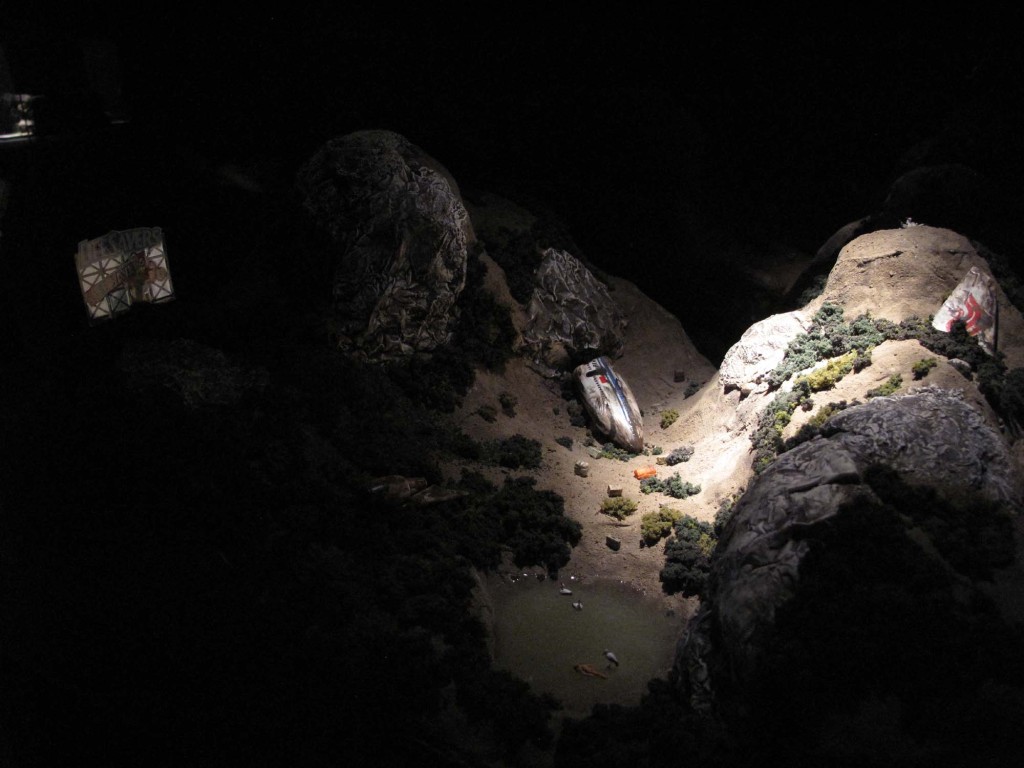Student review of Cao Fei’s first Museum Solo Show in the States at MoMA PS1

On view April 3–August 31, 2016 @ MoMA PS1
In her first museum solo show in the United States at MoMA PS1, Cao Fei (b. 1978) calls upon an array of multi-media disciplines to create surreal and imaginative worlds inspired by the bleak industrial environment of her home city, Guangzhou, China. In her provocative films and photography, Cao layers and juxtaposes elements of the imagination and absurdity with the mundane and ordinary. The centerpiece of this exhibition, a stop motion film titled, La Town, simultaneously appalls and intrigues the viewer in the imaginative world of her work by evoking a startling range of emotions and sensations. Using plastic figurines, miniature sets, dark haunting music, and a sub-titled narration in French, she tells the post-apocalyptic story of a fictitious, dystopian world called La Town.
While sitting in the dark room of the museum I slipped into an inescapable trance; despite strong sensations of unease and disturbance I was incapable of standing up and leaving. What is it about this world she created that is so captivating? Is it the humor of seeing Santa-Clause figurines and childish toy animals placed in dark scenes of death and destruction? Is it the cultural references of popular logos and images that captivate our attention? Or perhaps, it is the soothing and provocative French dialogue and poem-like narration that counteract the dark subject matter to further entice the viewer?
These elements create a relationship between the art and the audience in which the viewer is immersed in the subtle familiarity of La Town yet is simultaneously withdrawn and retrospectively distanced by the quasi-surreal aspects of this reality. The audience instinctively questions how their own world—and relationship with it—is any different from the world of La Town. This is what makes Cao’s work so universally applicable and appealing. She captivates and immerses the viewer in the imaginary world of her mind while constantly connecting and referencing highly ordinary and recognizable images, instinctively making us, the audience, question how we engage and interact with our own world and environment in comparison and in the context of our relationship with her art.
Post by Matt Cappetta, Freshman at Fordham University. This review was submitted for Professor Yamamura’s course, Art of China: Spirits and Society.